
Exploring the Best of Russia: A Travel Guide for Indian Tourists
Russia, the world’s largest country, is a land of sprawling landscapes, rich history, and vibrant culture that captivates the hearts of travelers. From the architectural grandeur of Moscow to the scenic beauty of Lake Baikal, Russia offers Indian tourists an unforgettable experience. This guide will provide Indian travelers with insights on the best time to visit, understanding Russian culture and language, must-try cuisines, travel tips, a perfect 7-day itinerary, shopping advice, and the top 15 destinations to explore.
Best Time to Visit:
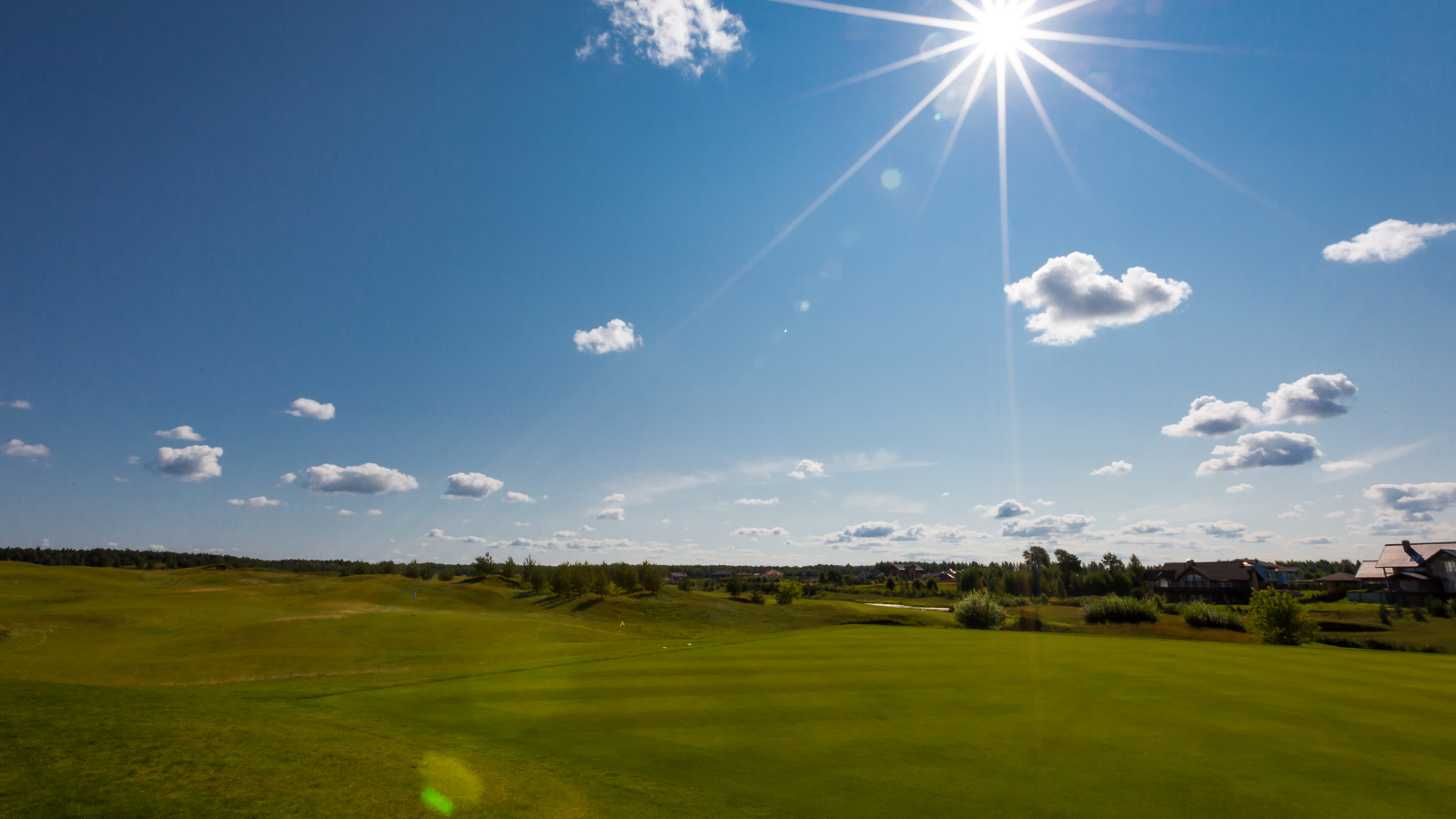
1. Summer (June to August) – Best for Exploring Cities and Festivals
- Overview: Peak season with warm weather (15°C to 30°C); long days for sightseeing.
- Highlights:
- White Nights in St. Petersburg – nearly 24 hours of daylight in June.
- Major festivals: Moscow International Film Festival, Scarlet Sails, Independence Day.
- Nature escapes: River cruises, hiking, Lake Baikal, Sochi beaches.
- Tips:
- Book flights/accommodations early.
- Bring sunscreen, sunglasses, and light clothing.
- Expect crowds at popular sites in July and August.
2. Winter (December to February) – Ideal for Snow, Skiing, and Festivities
- Overview: Famous snowy landscapes, very cold (-20°C to -5°C), especially in Siberia.
- Highlights:
- Winter sports: Skiing, snowboarding in Krasnaya Polyana, Ural Mountains.
- Festivities: New Year’s, Russian Orthodox Christmas, Moscow Christmas Festival.
- Fewer crowds: Off-peak season with shorter lines at attractions.
- Tips:
- Dress in layers, with insulated jackets, gloves, and waterproof boots.
- Prepare for short daylight hours.
- Choose accommodations with heating.
3. Spring (March to May) – Best for Mild Weather and Blossoming Landscapes
- Overview: Warming temperatures (-5°C to 15°C); flowers bloom by April/May.
- Highlights:
- Cherry blossoms: Gardens and parks in full color.
- Victory Day (May 9): Parades and fireworks.
- Off-peak: Fewer tourists, peaceful sightseeing.
- Tips:
- Dress in layers; expect temperature shifts.
- Book for Victory Day events in advance.
- Carry an umbrella or raincoat for spring rains.
4. Autumn (September to November) – Ideal for Foliage and Cool, Crisp Days
- Overview: Scenic “Golden Autumn” with temperatures from -10°C to 10°C.
- Highlights:
- Fall foliage: Parks with vivid autumn colors.
- Pleasant weather: Cool, ideal for sightseeing and walking tours.
- Cultural season: Ballet, theater, and arts performances begin.
- Tips:
- Bring a light jacket and rainproof shoes.
- Late November can be cold, avoid travel as winter approaches.
- Book cultural event tickets, especially for ballet/theater.
Weather Overview (with Table):
Russia has a diverse climate due to its size. Here's a seasonal breakdown:
| Season | Months | Average Temperature (°C) | Highlights |
|---|---|---|---|
| Winter | Dec - Feb | -20 to -5 | Snowy landscapes, winter sports |
| Spring | Mar - May | -5 to 15 | Blossoming landscapes, fewer tourists |
| Summer | Jun - Aug | 15 to 30 | Pleasant for city tours, festivals |
| Autumn | Sep - Nov | -10 to 10 | Fall colors, cooler temperatures |
Currency and Cash Guidelines:
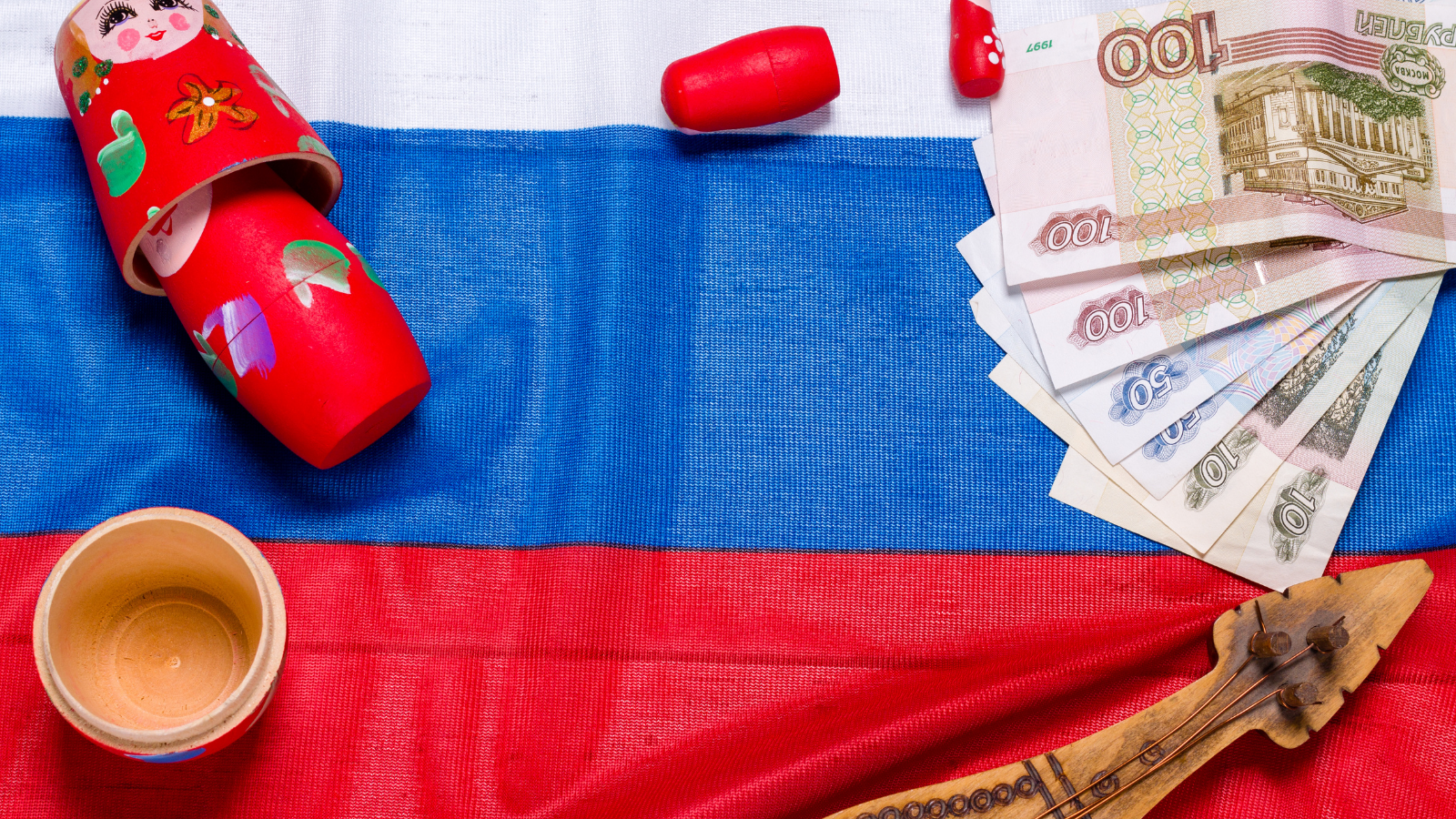
1. Currency Information
- Official Currency: The Russian Ruble (₽), abbreviated as RUB.
- Denominations: Russian Ruble notes come in denominations of 10, 50, 100, 200, 500, 1,000, 2,000, and 5,000 rubles. Coins are available in values of 1, 2, 5, and 10 rubles, along with kopecks (1 ruble = 100 kopecks), though kopeck coins are rarely used.
2. Exchange Rates and Conversion
Exchange rates fluctuate, but generally, 1 Indian Rupee (INR) is equivalent to around 1.2-1.5 Russian Rubles (RUB), depending on market rates. Indian tourists should check current exchange rates before travel to estimate costs.
3. Currency Exchange Options
- Airports and Banks: Currency can be exchanged at airports, banks, and authorized exchange kiosks. While convenient, airport exchange counters often have less favorable rates.
- Hotels: Some hotels offer currency exchange services, though rates may vary and fees could be higher.
- Currency Exchange Centers: Dedicated exchange centers in tourist areas provide competitive rates. It’s essential to check for hidden fees and always count your money carefully before leaving the counter.
4. Using Credit and Debit Cards
- Widely Accepted: Credit and debit cards, especially Visa and Mastercard, are widely accepted in Russia’s major cities (Moscow, St. Petersburg, etc.) for payments in hotels, restaurants, and shopping centers.
- Less Common in Rural Areas: Small towns, local markets, and rural areas may not accept cards, so having cash is advisable.
- Transaction Fees: Check with your bank for any international transaction fees. Some cards offer reduced foreign transaction fees, which can help reduce travel costs.
5. ATMs in Russia
- Availability: ATMs (called “bankomats” in Russian) are common in cities, airports, and malls, offering services in multiple languages, including English.
- Fees: Some ATMs may charge a withdrawal fee, especially for foreign cards. Indian travelers should check with their bank for international withdrawal fees.
- Security Tips: Use ATMs located in well-lit, secure locations like banks or shopping centers. Be cautious of skimming devices and shield your PIN.
6. Tips for Carrying Cash
- How Much Cash to Carry: Carrying 3,000 to 5,000 RUB (approximately ₹3,500 to ₹5,500) should be sufficient for daily expenses, especially in areas where card payment is less common.
- Small Bills and Coins: Having small bills and coins is helpful, especially for public transport, small purchases, and tipping. Larger denominations may not be accepted at smaller establishments.
- Keep Cash Secure: Divide cash into different wallets or bags for security. Carry only what you need for the day, and keep extra cash in a secure location at your accommodation.
7. Tipping Culture in Russia
- Expected in Service Industries: Tipping is common in restaurants, cafes, and for services like taxis and hotel staff. A tip of around 10-15% of the bill is appreciated but not mandatory.
- How to Tip: In restaurants, it’s common to leave cash on the table or add it to the bill if paying by card (ask the server to include the tip).
- Cash Tips Preferred: Cash is preferred for tips, especially in smaller establishments that might not accept card tips.
8. Mobile Payment Options
- Growing Popularity: Mobile payment options like Apple Pay, Google Pay, and Samsung Pay are increasingly accepted in urban areas and larger businesses.
- Convenient for Contactless Payments: These options provide a secure, contactless way to pay, especially in shops, restaurants, and public transportation in Moscow and St. Petersburg.
- Limitations: Some small vendors, local markets, or rural areas may not accept mobile payments, so it’s best to keep cash as a backup.
9. Currency Regulations and Limits
- Currency Import/Export: Foreign currency can be brought into and taken out of Russia with no restrictions, though amounts over $10,000 USD (or equivalent) must be declared.
- Avoid Counterfeit Bills: Counterfeit currency is rare but does exist. It’s recommended to exchange money only at official exchange centers or banks to ensure authenticity.
10. Safety and Money Management Tips
- Be Wary of Scams: Avoid exchanging money on the street or in unofficial places to prevent fraud or counterfeit currency issues.
- Secure Your Cards: Keep your credit and debit cards secure, especially in crowded places, and report any lost or stolen cards to your bank immediately.
- Keep Emergency Cash: Having an emergency fund in USD, EUR, or INR can be helpful in case of unexpected situations.
Travel Tips for Indian Tourists:
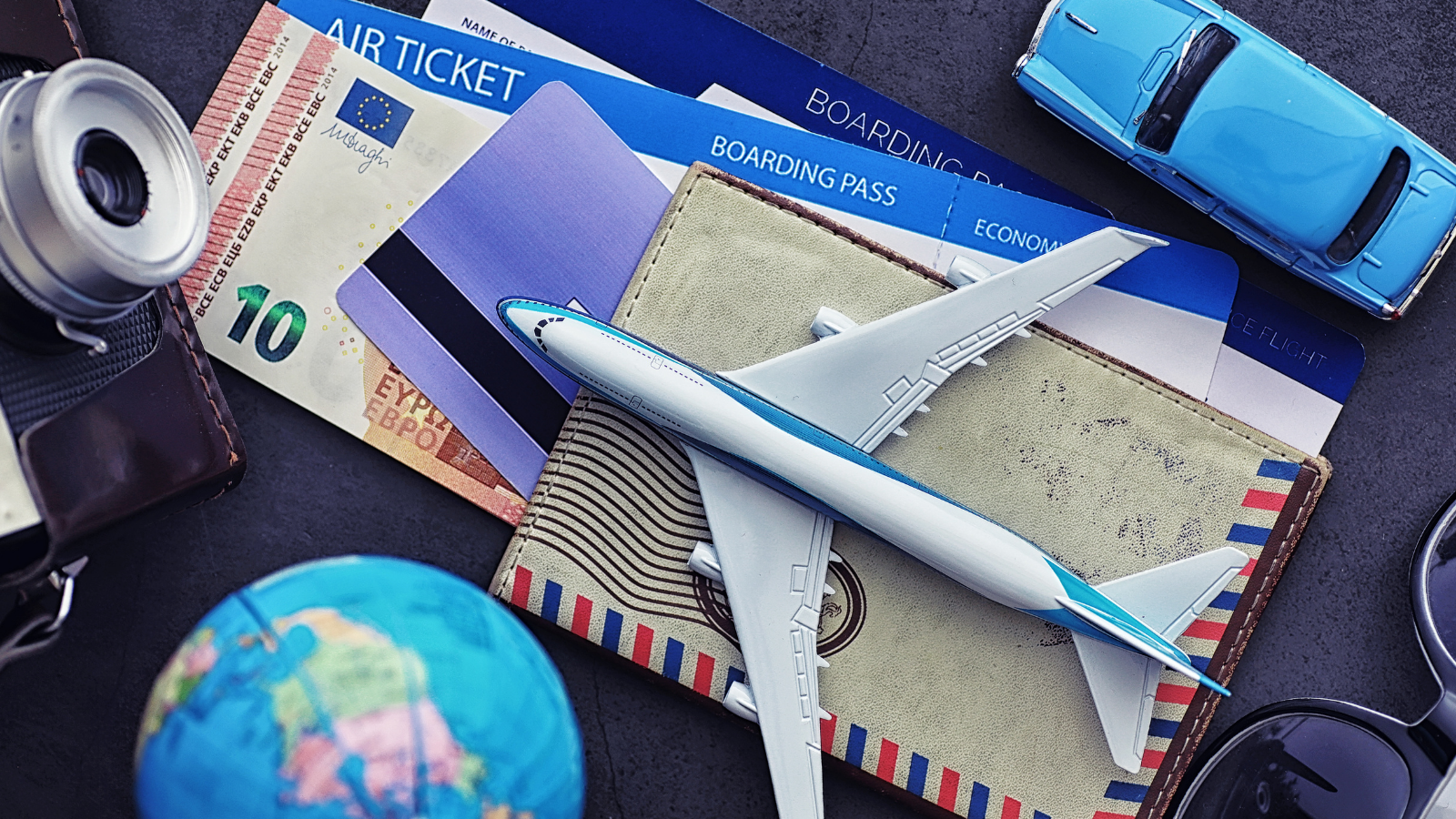
1. Visa Requirements
- Visa Application: Indian tourists need a visa to enter Russia. The application requires an invitation or tourist voucher from a Russian host or hotel. This can be arranged through your travel agent or hotel booking.
- Processing Time: Apply at least 4-6 weeks in advance. Processing typically takes around 10-15 business days but may vary based on seasonal demand.
- Documents Needed: Passport, visa application form, invitation letter, recent photographs, travel itinerary, and proof of funds.
- Registration Requirement: In Russia, tourists staying longer than seven days must register with local authorities (usually done by hotels).
2. Local Transportation
- Metro System: The Moscow and St. Petersburg metro systems are efficient, inexpensive, and reliable. They also feature stunning architecture, especially in Moscow.
- Public Buses and Taxis: Buses, trams, and trolleybuses are common in cities. Use official taxi apps like Yandex.Taxi or Gett, as they offer fixed rates and are safer.
- Domestic Trains: Russia’s extensive rail network connects cities. High-speed trains, like the Sapsan, make the Moscow-St. Petersburg route in about 4 hours.
- Payment Options: Public transport tickets can be purchased at stations or kiosks, while contactless cards and mobile payments are also accepted on some metro lines.
3. Currency and Money Handling
- Currency: Russia uses the Russian Ruble (RUB). ATMs are available widely in cities, but keep cash for smaller towns.
- Credit Cards: Cards are accepted in urban areas but less common in rural areas.
- Currency Exchange: Exchange currency at authorized kiosks, banks, or hotels. Avoid street exchanges.
4. Language Barrier
- Russian Language: English is not widely spoken outside major tourist areas, so learning basic Russian phrases is helpful.
- Translation Apps: Google Translate and Yandex.Translate offer offline language packs for Russian, which can be very useful.
5. Power Adapters and Connectivity
- Power Sockets: Russia uses Type C and F sockets with a voltage of 220V. Indian travelers will need an adapter.
- Internet and SIM Cards: Major cities offer free Wi-Fi in public areas, cafes, and hotels. For extended stays, consider purchasing a local SIM card from providers like MTS, Beeline, or Megafon, which offer affordable data plans.
6. Safety and Security
- Personal Safety: Russia is generally safe for tourists, especially in popular cities. Avoid deserted areas at night and keep an eye on personal belongings.
- Emergency Numbers: The emergency number in Russia is 112, which connects to police, ambulance, and fire services.
7. Health and Travel Insurance
- Insurance: Travel insurance is recommended to cover health, accidents, and any unexpected incidents.
- Vaccinations: No mandatory vaccinations for Indian travelers, but it’s advisable to check with a healthcare provider for any recommended vaccinations.
8. Tipping Culture
- Tipping Norms: Tipping is appreciated but not mandatory. A 10-15% tip is common in restaurants, while rounding up the fare is fine for taxis.
9. Seasonal Packing Tips
- Winter: Pack insulated jackets, thermals, gloves, and waterproof boots.
- Summer: Light clothing, sunscreen, and comfortable walking shoes are essential.
- Spring/Autumn: Layered clothing for unpredictable weather.
Russian Culture:
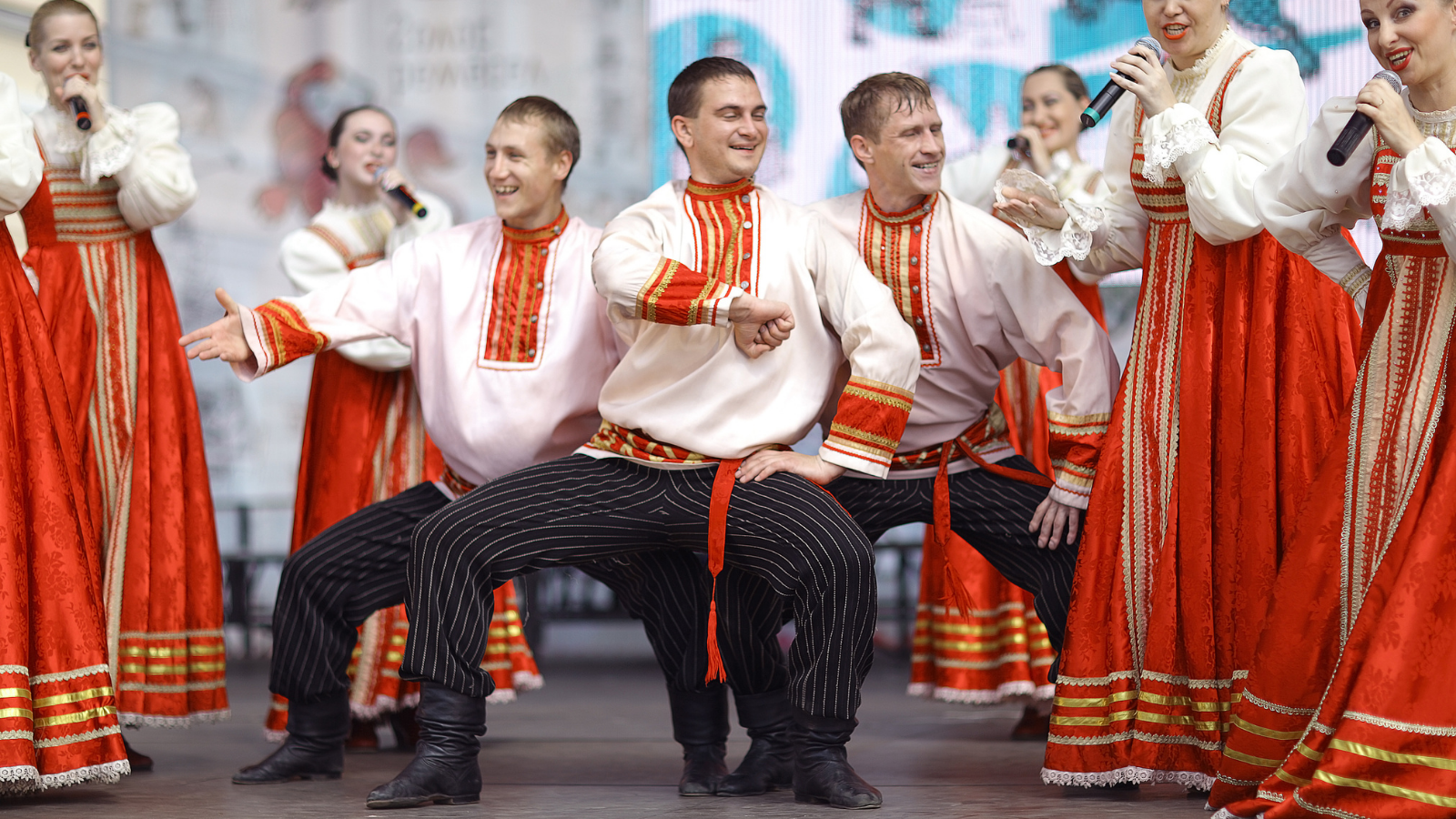
Russia’s culture is a unique blend of European and Asian influences, shaped over centuries by its history, art, religion, and traditions. Russian culture is known for its depth in literature, music, and ballet, with famous cultural figures like Leo Tolstoy, Fyodor Dostoevsky, Pyotr Ilyich Tchaikovsky, and Anna Pavlova being recognized globally. For Indian tourists, Russian culture can feel both familiar and exotic, as it is a culture rich in community values and traditions.
Key Aspects of Russian Culture
- Respect for Tradition: Russians have a strong sense of tradition. Many cultural practices are rooted in historical customs, religious practices, and community values. Festivals like Maslenitsa (a Russian folk holiday marking the end of winter) and Orthodox Christmas (celebrated on January 7) are filled with traditional music, dances, and rituals.
- Russian Orthodox Church: Religion plays a significant role, with Russian Orthodox Christianity being the dominant faith. The church has influenced Russian art, literature, and architecture. Cathedrals like St. Basil’s Cathedral in Moscow and the Church of the Savior on Spilled Blood in St. Petersburg are iconic examples of Russian Orthodox architecture, with their unique domes and intricate details.
- Family and Community Values: Russians value family and community connections deeply. Large family gatherings are common, especially during holidays. Elders are respected, and politeness is considered important in social interactions. Similar to Indian culture, Russian families often share meals and celebrate holidays together.
- Arts and Literature: Russia is renowned for its contribution to literature, classical music, ballet, and visual arts. Works by Tolstoy, Dostoevsky, and Pushkin have left a lasting impact on world literature. Russian ballet and theater are world-class, with the Bolshoi Theatre in Moscow and Mariinsky Theatre in St. Petersburg hosting celebrated performances.
Social Etiquette
- Handshakes: Russians greet with a firm handshake. Men typically remove hats and gloves during greetings, and it’s common to make eye contact.
- Public Conduct: Russians tend to be reserved in public. Speaking softly, dressing modestly, and maintaining personal space are appreciated.
- Gift-Giving: When visiting someone’s home, it’s customary to bring a small gift like flowers (always in odd numbers), chocolates, or wine.
Russian Language:
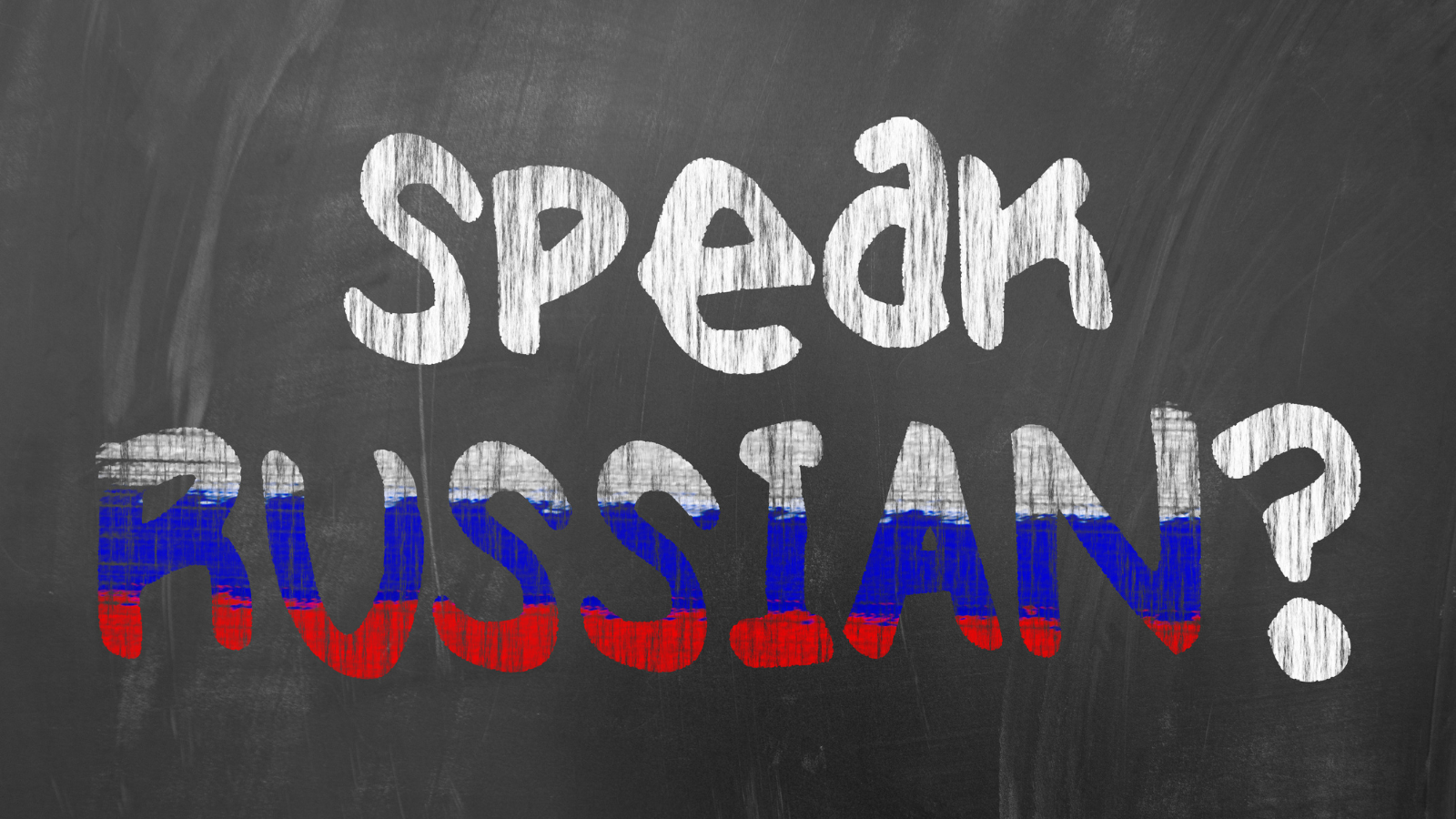
Russian is the official language of Russia and is written in the Cyrillic alphabet. For Indian tourists, it can be helpful to learn basic Russian phrases or use translation tools, as English is not widely spoken outside major tourist areas.
About the Russian Language
- Cyrillic Alphabet: The Russian language uses a unique script called Cyrillic, which consists of 33 letters. Some letters resemble those of the Latin alphabet but have different pronunciations.
- Limited English Proficiency: In Moscow and St. Petersburg, you’ll find English speakers in hotels, tourist attractions, and larger restaurants, but in smaller towns or local markets, Russian is predominantly spoken.
- Use of Translation Apps: Apps like Google Translate and Yandex Translate support the Cyrillic alphabet and offer offline packs, which can be extremely helpful for navigating menus, signboards, and directions.
Common Russian Phrases for Tourists
| Russian Phrase | Pronunciation | English Translation |
|---|---|---|
| Здравствуйте | Zdravstvuyte | Hello |
| Спасибо | Spasibo | Thank you |
| Пожалуйста | Pozhaluysta | Please / You’re welcome |
| Да / Нет | Da / Nyet | Yes / No |
| Сколько стоит? | Skol'ko stoit? | How much does it cost? |
| Я не понимаю | Ya ne ponimayu | I don’t understand |
| Помогите, пожалуйста | Pomogite, pozhaluysta | Please help |
| Где находится…? | Gde nakhoditsya…? | Where is…? |
| Счёт, пожалуйста | Schyot, pozhaluysta | The bill, please |
Learning even a few simple words can make interactions with locals smoother and is often appreciated.
Russian Cuisine
Russian cuisine is hearty, flavorful, and reflective of the country’s cold climate and agricultural traditions. It includes a mix of soups, bread, vegetables, meat, and fermented foods that are designed to sustain energy. Indian tourists will find some dishes familiar, while others offer a unique experience of Russian flavors.
Key Elements of Russian Cuisine
- Hearty Soups: Soups are an essential part of Russian meals, especially in colder months. Traditional soups like borscht (beetroot soup) and shchi (cabbage soup) are commonly served with sour cream.
- Bread and Pastries: Bread is a staple food, and Russians have various types of bread and pastries. Rye bread is common, as are pastries like pirozhki (small stuffed pies).
- Pickled and Fermented Foods: Due to the cold climate, many Russian foods are preserved by pickling or fermenting. Pickles, sauerkraut, and fermented drinks like kvass (a mild beverage made from rye bread) are popular.
Must-Try Russian Dishes for Indian Tourists
- Borscht: A vibrant beetroot soup served hot or cold, garnished with sour cream. Borscht has a mildly sweet flavor and can be vegetarian or made with meat.
- Pelmeni: Dumplings filled with minced meat, typically served with sour cream or butter. Pelmeni is similar to momos and can be an enjoyable dish for Indian tourists.
- Blini: Thin pancakes resembling Indian dosas, usually topped with caviar, honey, jam, or sour cream. Blini are often served during the Maslenitsa festival.
- Olivier Salad: Also known as Russian salad, this dish is a creamy potato salad with mixed vegetables, eggs, and mayonnaise. It’s often served during festive occasions.
- Pirozhki: Small pastries stuffed with fillings like meat, cabbage, or potato. These make for a quick and filling snack, similar to Indian stuffed bread.
- Shashlik: Grilled skewers of marinated meat, popular in Russian and Central Asian cuisine. The flavors and preparation methods are similar to Indian kebabs.
- Kvass: A mildly alcoholic drink made from rye bread. It has a unique taste that can be refreshing, especially in summer.
- Medovik: A layered honey cake, often served with tea. Medovik is sweet and creamy, with a light honey flavor that Indian tourists might enjoy.
Dining Etiquette in Russia
- Meals and Courses: Russian meals typically consist of multiple courses, including appetizers (zakuski), a main dish, and dessert. Soups are commonly served as the first course.
- Sour Cream: Sour cream (smetana) is a staple in Russian cuisine, often served with soups, blini, and dumplings. It adds a creamy, tangy flavor to dishes.
- Tea Culture: Tea is a major part of Russian life and is often served at the end of meals with sweets like pastries, honey, or jam. Russian tea is strong and is typically accompanied by a samovar (a traditional tea kettle).
- Restaurant Etiquette: It’s customary to wait for the host or eldest person to begin eating. Tipping around 10-15% is appreciated in restaurants.
Vegetarian and Halal Options
- Vegetarian Options: While traditional Russian cuisine is meat-heavy, vegetarian options are available. Borscht (without meat), potato dishes, mushroom-based dishes, salads, and blini with vegetable fillings are commonly available.
- Halal Food: Halal food is less common, but in larger cities like Moscow and St. Petersburg, there are halal-certified restaurants, especially near areas with Middle Eastern and Central Asian communities.
Ideal Trip Duration (7 Days):

A 7-day itinerary is enough to cover Russia’s most iconic sites in Moscow and St. Petersburg. Here’s a suggested itinerary:
Day 1: Arrival in Moscow
- Visit Red Square, St. Basil’s Cathedral, and GUM Department Store.
- Evening: Relax by the Moskva River or enjoy a city tour.
Day 2: Exploring Moscow
- Explore the Kremlin and Armory Museum.
- Visit Arbat Street and Gorky Park.
- Evening: Try authentic Russian cuisine at a local restaurant.
Day 3: Moscow’s Cultural Gems
- Tour the Moscow Metro and its beautifully decorated stations.
- Visit Tretyakov Gallery to explore Russian art.
- Travel to St. Petersburg by high-speed train in the evening.
Day 4: St. Petersburg
- Explore Nevsky Prospect and Church of the Savior on Spilled Blood.
- Take a boat cruise on the canals.
Day 5: Hermitage Museum and Peterhof Palace
- Spend the day at the Hermitage Museum.
- Take a day trip to Peterhof Palace.
Day 6: Russian Museum and Catherine Palace
- Visit the Russian Museum and enjoy the artistic masterpieces.
- Tour Catherine Palace and its famous Amber Room.
Day 7: Return to Moscow
- Take a leisurely morning stroll in St. Petersburg.
- Depart for Moscow for your return journey.
Shopping and Shopping Tips:

Russia offers a wide variety of unique, high-quality products that reflect its rich culture and history. From traditional handicrafts to luxury goods, here’s a breakdown of must-buy items, the best shopping spots, and helpful tips to enhance your shopping experience in Russia.
Popular Items to Buy in Russia:
- Matryoshka Dolls (Nesting Dolls)
- Description: Matryoshka dolls are traditional Russian wooden dolls that stack within one another. Each set has several dolls, usually hand-painted, with designs ranging from traditional folk art to more modern interpretations.
- Where to Buy: Available in most souvenir shops, especially in Izmailovsky Market in Moscow.
- Amber Jewelry
- Description: Amber, a fossilized tree resin, is highly valued in Russia, especially along the Baltic coast. Russian amber is often crafted into necklaces, earrings, rings, and decorative pieces.
- Where to Buy: Jewelry shops, souvenir markets, and boutique stores in Moscow and St. Petersburg.
- Russian Vodka
- Description: Known for its purity and flavor, Russian vodka is a popular souvenir. Look for brands like Beluga, Russian Standard, or Stolichnaya.
- Where to Buy: Supermarkets and specialty liquor stores; many brands are available at duty-free shops in airports.
- Ushanka Hats (Russian Fur Hats)
- Description: Ushanka hats, with their iconic ear flaps, are both practical and symbolic of Russian culture. They’re made from fur or faux fur and are excellent for winter travel.
- Where to Buy: Souvenir shops, markets, and clothing stores in major cities.
- Pavlovsky Posad Shawls and Scarves
- Description: These colorful, intricate shawls and scarves are made from wool or silk and feature traditional Russian floral patterns.
- Where to Buy: Specialized stores in Moscow or directly from manufacturers in the Pavlovsky Posad region.
- Samovar (Traditional Tea Kettle)
- Description: Samovars are metal containers used to boil water for tea and are a longstanding symbol of Russian hospitality. Modern versions are often electric, while traditional versions are charcoal-powered.
- Where to Buy: Antique shops, specialty kitchen stores, and markets like Izmailovsky Market.
- Soviet Memorabilia
- Description: Items like Soviet-era pins, badges, posters, and other memorabilia are popular among tourists. These items represent Russia’s complex history.
- Where to Buy: Flea markets, antique stores, and souvenir shops, particularly in Moscow.
- Russian Porcelain
- Description: Russian porcelain, particularly from the Imperial Porcelain Factory, is known for its fine craftsmanship and intricate designs. Items include tea sets, figurines, and decorative plates.
- Where to Buy: Department stores, specialty porcelain shops, and the Imperial Porcelain Factory in St. Petersburg.
- Gzhel Ceramics
- Description: Gzhel ceramics are characterized by their blue and white patterns, reminiscent of Chinese porcelain. The items range from tableware to decorative figurines.
- Where to Buy: Gift shops, department stores, and directly from Gzhel factories near Moscow.
- Khokhloma Wooden Tableware
- Description: Known for its red, black, and gold floral patterns, Khokhloma wooden tableware includes items like spoons, bowls, and dishes, hand-painted in traditional Russian style.
- Where to Buy: Souvenir shops, craft stores, and local markets.
Top Shopping Destinations in Russia:
1. Izmailovsky Market (Moscow)
- Overview: This open-air market is famous for its wide range of souvenirs and traditional Russian items, from nesting dolls to Soviet memorabilia.
- Tips: Bargaining is common here, so don’t be afraid to negotiate prices. Visit early for the best selection.
2. GUM Department Store (Moscow)
- Overview: GUM, located on Red Square, is an iconic shopping mall with beautiful architecture. It offers a mix of luxury brands, Russian products, and high-end souvenirs.
- Tips: Ideal for a luxury shopping experience or high-quality souvenirs.
3. Nevsky Prospect (St. Petersburg)
- Overview: This main street in St. Petersburg has various shops, including high-end boutiques, jewelry stores, and souvenir shops.
- Tips: Stroll along Nevsky Prospect to find unique souvenirs and enjoy the street’s historic atmosphere.
4. Tverskaya Street (Moscow)
- Overview: Known as one of Moscow’s busiest shopping streets, Tverskaya is home to a mix of luxury boutiques, local shops, and department stores.
- Tips: Explore side streets for smaller, unique shops with local artisan products.
5. Hermitage Museum Gift Shop (St. Petersburg)
- Overview: The gift shop at the Hermitage Museum offers unique souvenirs related to Russian art and culture.
- Tips: This is an ideal place for art enthusiasts to purchase high-quality, museum-inspired gifts.
Russia Shopping Tips
1. Cash vs. Card Payments
- Cards Accepted in Major Cities: Credit and debit cards (Visa and Mastercard) are widely accepted in larger stores, malls, and restaurants in Moscow and St. Petersburg.
- Cash in Rural Areas: Smaller towns and markets may only accept cash, so it’s best to carry rubles, especially for small purchases.
- Currency Exchange: Use official exchange centers, banks, or ATMs for currency exchange. Avoid exchanging currency on the street.
2. Bargaining and Negotiation
- Where to Bargain: Bargaining is acceptable in markets like Izmailovsky Market and smaller souvenir shops. However, it’s not common in department stores or high-end boutiques.
- Bargaining Tips: Start by offering around 70-80% of the asking price and negotiate politely. Vendors are often open to discounts, especially if you’re purchasing multiple items.
3. Tax-Free Shopping
- Eligibility: Non-residents of Russia can qualify for tax-free shopping on certain items in some stores. Look for shops with a “Tax-Free” sign.
- Minimum Purchase: A minimum purchase amount may apply to qualify for tax-free shopping (typically around 10,000 RUB).
- Claiming VAT Refund: After purchasing, ask for a tax-free form, and then present it, along with the goods, at customs when leaving Russia to receive a VAT refund.
4. Product Authenticity
- Matryoshka Dolls: Authentic dolls are hand-painted and made of wood. Be wary of plastic or poorly painted versions that may be lower quality.
- Amber Jewelry: Real amber is light and slightly warm to the touch. Plastic imitations are common, so buy amber from reputable stores.
- Soviet Memorabilia: Reproductions are common, so if you’re looking for genuine memorabilia, check antique stores or seek expert advice.
5. Shopping Hours
- Standard Hours: Most shops in major cities are open from 10:00 AM to 10:00 PM, seven days a week.
- Markets: Markets like Izmailovsky Market often close earlier, around 6:00 PM. It’s advisable to visit in the morning for a wider selection.
6. Packing and Customs Regulations
- Duty-Free Allowance: For non-commercial items, you can bring a limited amount of goods back to India duty-free (e.g., personal souvenirs and gifts).
- Prohibited Exports: Certain antiques and cultural artifacts may require a special permit to take out of Russia. Check with vendors if purchasing artwork or valuable items.
Top 15 Places to Visit:
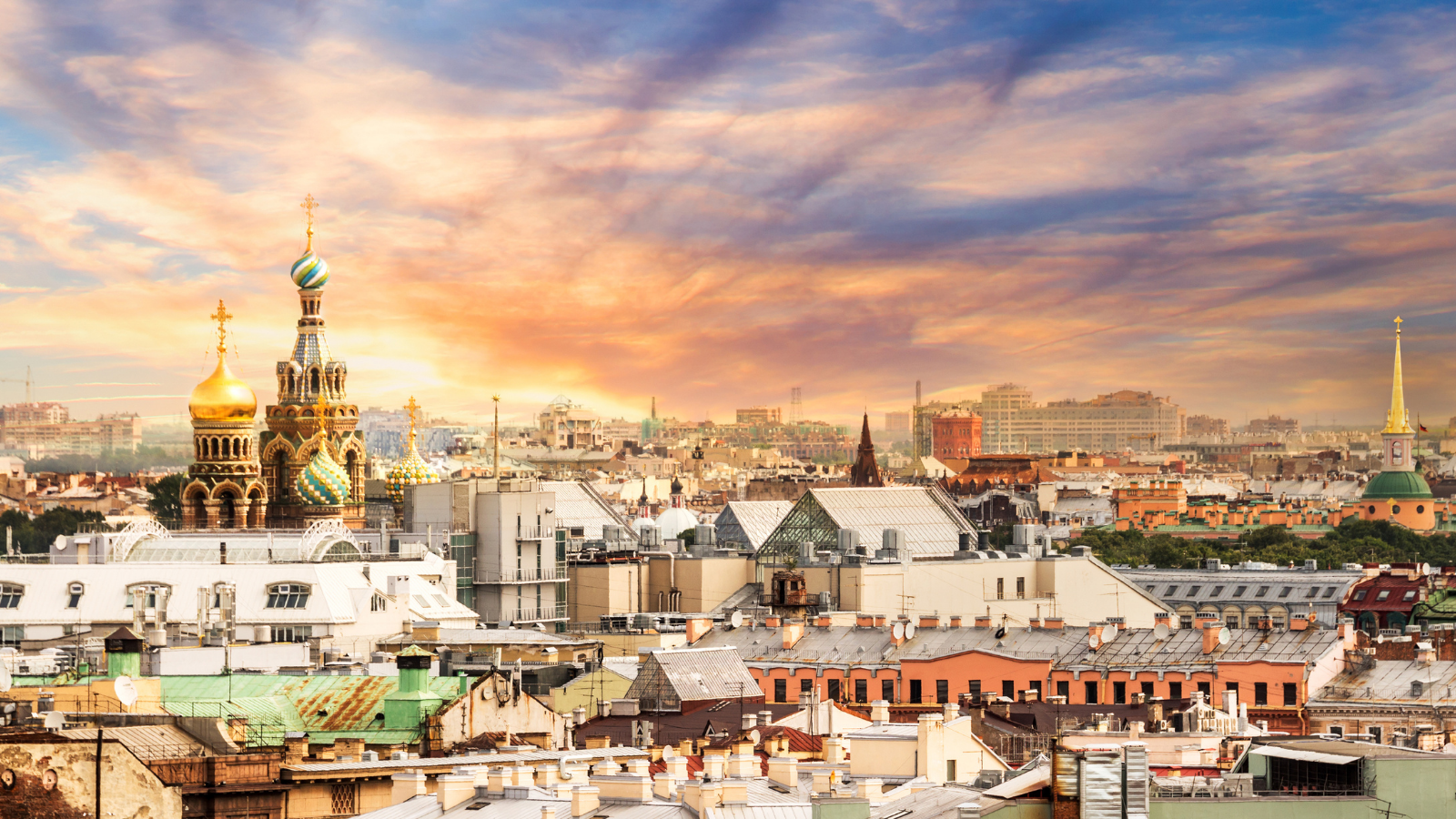
1. Moscow Kremlin- Overview: The Moscow Kremlin is the political and historical heart of Russia, dating back to the 12th century. This fortified complex includes palaces, cathedrals, and the official residence of the Russian president.
- Highlights: Key sites within the Kremlin include the Armory Museum, housing Russian imperial treasures, and the Cathedral of the Assumption, one of Russia’s most revered churches.
- Why Visit: Visiting the Kremlin offers a fascinating look into Russia’s political and religious history, making it a must-see in Moscow.
2. Red Square
- Overview: Red Square is Moscow’s iconic central square, surrounded by some of Russia's most famous landmarks. It has been a central stage for many historical events and celebrations.
- Highlights: The St. Basil’s Cathedral with its vibrant onion domes, Lenin’s Mausoleum, and the State Historical Museum are all located on Red Square.
- Why Visit: Red Square provides a captivating view of Russian history, architecture, and culture, making it a symbol of Russia and one of the most photographed locations in the world.
3. Hermitage Museum
- Overview: Located in St. Petersburg, the Hermitage Museum is one of the world’s largest and oldest art museums. Founded by Catherine the Great in 1764, it houses over 3 million works of art.
- Highlights: Famous exhibits include works by Leonardo da Vinci, Rembrandt, and Michelangelo, as well as ancient Greek, Roman, and Egyptian artifacts.
- Why Visit: The Hermitage offers an unparalleled art collection in a stunning setting, with the Winter Palace being one of its most impressive buildings.
4. Lake Baikal
- Overview: Lake Baikal, located in Siberia, is the world’s deepest and oldest freshwater lake, with depths reaching over 1,600 meters. It contains around 20% of the world’s fresh surface water.
- Highlights: In winter, Lake Baikal freezes over with crystal-clear ice, creating unique ice formations. Summer activities include hiking, camping, and boat trips.
- Why Visit: Lake Baikal is a natural wonder, offering breathtaking views, diverse wildlife, and a sense of serenity for nature lovers.
5. Peterhof Palace
- Overview: Often referred to as the "Russian Versailles," Peterhof Palace in St. Petersburg was built by Peter the Great and is renowned for its opulent architecture and beautiful gardens.
- Highlights: The Grand Cascade, a series of 64 fountains and stunning golden statues, is the focal point of the gardens. The palace interiors are equally impressive, with richly decorated rooms and historical artifacts.
- Why Visit: Peterhof is a masterpiece of Russian baroque architecture, offering a glimpse into the grandeur of the Russian imperial court.
6. Golden Ring
- Overview: The Golden Ring is a collection of historic towns northeast of Moscow, each showcasing traditional Russian architecture, culture, and history.
- Highlights: Towns like Suzdal, Vladimir, and Yaroslavl feature ancient monasteries, kremlins, and wooden houses, along with rich religious art.
- Why Visit: Visiting the Golden Ring towns is like stepping back in time to medieval Russia, providing a contrast to the modern cities of Moscow and St. Petersburg.
7. Trans-Siberian Railway
- Overview: The Trans-Siberian Railway is the longest railway in the world, stretching from Moscow to Vladivostok and covering over 9,200 kilometers across Russia.
- Highlights: The journey takes about 7 days nonstop and passes through diverse landscapes, including forests, steppes, mountains, and Lake Baikal.
- Why Visit: The Trans-Siberian Railway offers one of the world’s most scenic and immersive travel experiences, providing an unforgettable view of Russia’s vast landscapes and regional diversity.
8. Catherine Palace
- Overview: Located in Tsarskoye Selo (Pushkin), the Catherine Palace is famous for its Rococo architecture and elaborate decor. The palace was a summer residence for Russian tsars.
- Highlights: The Amber Room, entirely decorated with amber panels, gold leaf, and mirrors, is one of the palace’s main attractions. The expansive gardens also offer beautiful landscapes.
- Why Visit: Catherine Palace showcases the opulence of the Russian Empire and is a masterpiece of baroque art and architecture.
9. Sochi
- Overview: Sochi, located on the Black Sea coast, is known for its subtropical climate and beautiful beaches. It gained international fame as the host of the 2014 Winter Olympics.
- Highlights: Visitors can enjoy the beaches in summer and ski resorts in winter, making Sochi a year-round destination. The Rosa Khutor resort offers excellent skiing, while the Sochi Arboretum showcases lush botanical gardens.
- Why Visit: Sochi is Russia’s premier resort town, offering both seaside relaxation and mountain activities, a rare combination in one location.
10. Kazansky Cathedral
- Overview: Located on Nevsky Prospect in St. Petersburg, Kazansky Cathedral is an impressive example of Russian neoclassical architecture, inspired by St. Peter’s Basilica in Rome.
- Highlights: The cathedral houses an icon of Our Lady of Kazan, one of the most revered icons in Russia. It’s also a functioning Orthodox church and an important pilgrimage site.
- Why Visit: Kazansky Cathedral is an architectural marvel and an essential part of St. Petersburg’s religious and cultural history.
11. Novosibirsk Zoo
- Overview: Novosibirsk Zoo, located in Siberia, is one of the largest and most well-known zoos in Russia, home to over 10,000 animals representing more than 700 species.
- Highlights: The zoo is famous for its successful breeding programs, particularly for endangered species like snow leopards and Siberian tigers.
- Why Visit: Novosibirsk Zoo is a top attraction for families and animal lovers, offering a unique chance to see rare Siberian species.
12. Sergiyev Posad
- Overview: Located in the Golden Ring, Sergiyev Posad is an important spiritual and historical center, home to the Trinity Lavra of St. Sergius, a UNESCO World Heritage Site.
- Highlights: The monastery complex features beautiful churches, including the Cathedral of the Assumption, with its iconic blue domes decorated with gold stars.
- Why Visit: Sergiyev Posad offers insight into Russian Orthodoxy and medieval Russian architecture, attracting pilgrims and tourists alike.
13. St. Isaac’s Cathedral
- Overview: St. Isaac’s Cathedral in St. Petersburg is the largest Russian Orthodox cathedral in the city and one of the largest in the world.
- Highlights: Its massive golden dome is visible across St. Petersburg. The interior is richly decorated with mosaics, paintings, and columns made from malachite and lapis lazuli.
- Why Visit: The cathedral is an architectural wonder, offering breathtaking views of St. Petersburg from its colonnade.
14. Kolomenskoye
- Overview: Kolomenskoye is a former royal estate located just outside Moscow, featuring historic wooden churches, gardens, and scenic views of the Moskva River.
- Highlights: The Church of the Ascension, a UNESCO World Heritage site, is the main attraction. Built in 1532, it’s one of Russia’s most significant early stone churches.
- Why Visit: Kolomenskoye offers a peaceful escape from Moscow, with beautiful architecture and lush landscapes.
15. Mamayev Kurgan
- Overview: Mamayev Kurgan in Volgograd is a monumental WWII memorial dedicated to the Battle of Stalingrad, one of the war’s most pivotal battles.
- Highlights: The main attraction is the towering Motherland Calls statue, one of the largest statues in the world. The site also includes memorial halls and graves honoring fallen soldiers.
Why Visit: Mamayev Kurgan is a powerful tribute to Russia’s WWII history, offering visitors a solemn and emotional experience.
Frequently Asked Questions (FAQs)
Q1: Is Russia safe for Indian tourists?
Yes, Russia is generally safe for tourists, especially in major cities. Just stay vigilant, avoid remote areas, and respect local customs.
Q2: What is the ideal budget for a 7-day trip to Russia?
A mid-range budget of ₹1.5 to ₹2 lakhs should cover accommodation, food, sightseeing, and transport comfortably.
Q3: Can Indian debit cards be used in Russia?
Yes, Indian debit cards are widely accepted in urban areas, but carry some cash for smaller towns and markets.
Q4: What are the best months to visit Russia?
Summer (June-August) is ideal for sightseeing, while winter (December-February) is best for snowy landscapes and festivals.
Q5: Do I need to know Russian to travel in Russia?
Knowing basic phrases is helpful, but translation apps like Google Translate make travel easier in most areas.
Q6: How is the food in Russia for Indian travelers?
Russian cuisine offers flavorful dishes, with vegetarian options available in big cities. Indian restaurants are also easy to find.
Q7: What should I pack for a trip to Russia?
Pack seasonally—heavy coats for winter, light clothing for summer, and always include travel essentials like adapters and toiletries.
Q8: Is bargaining common in Russia?
Bargaining is accepted in markets, especially for souvenirs, but not in department stores or malls.
Q9: How is public transport in Russia for tourists?
Public transport is efficient; metros in Moscow and St. Petersburg are especially popular, with taxis and intercity trains also reliable.
Q10: Can I use my mobile phone in Russia?
Yes, local SIM cards from MTS, Beeline, or Megafon are affordable, or you can use international roaming plans.
Conclusion
Exploring Russia offers Indian tourists a chance to dive into a world of architectural marvels, cultural richness, and scenic beauty. From the majestic structures in Moscow to the tranquil landscapes of Lake Baikal, each part of Russia is worth discovering. By following this guide, Indian travelers can experience the best of Russia with confidence and ease, creating memories that last a lifetime.






